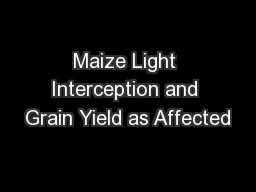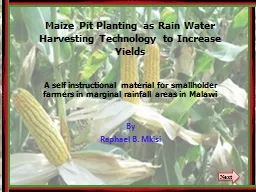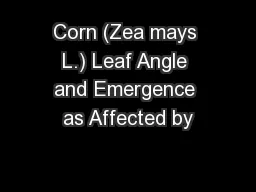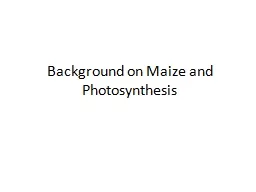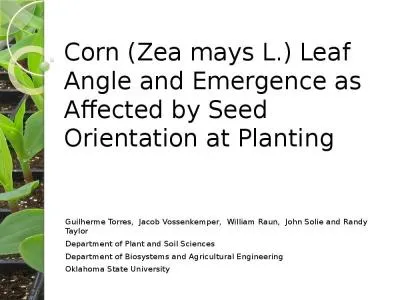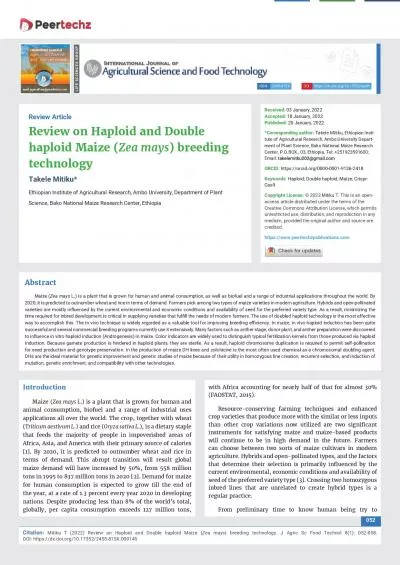PPT-Maize Light Interception and Grain Yield as Affected
Author : liane-varnes | Published Date : 2017-01-11
by Precision Planting Precision Planting of Corn Zea mays L to Manipulate Leaf Geometry Research Questions Can corn leaf orientation be manipulated by controlling
Presentation Embed Code
Download Presentation
Download Presentation The PPT/PDF document "Maize Light Interception and Grain Yield..." is the property of its rightful owner. Permission is granted to download and print the materials on this website for personal, non-commercial use only, and to display it on your personal computer provided you do not modify the materials and that you retain all copyright notices contained in the materials. By downloading content from our website, you accept the terms of this agreement.
Maize Light Interception and Grain Yield as Affected: Transcript
Download Rules Of Document
"Maize Light Interception and Grain Yield as Affected"The content belongs to its owner. You may download and print it for personal use, without modification, and keep all copyright notices. By downloading, you agree to these terms.
Related Documents

